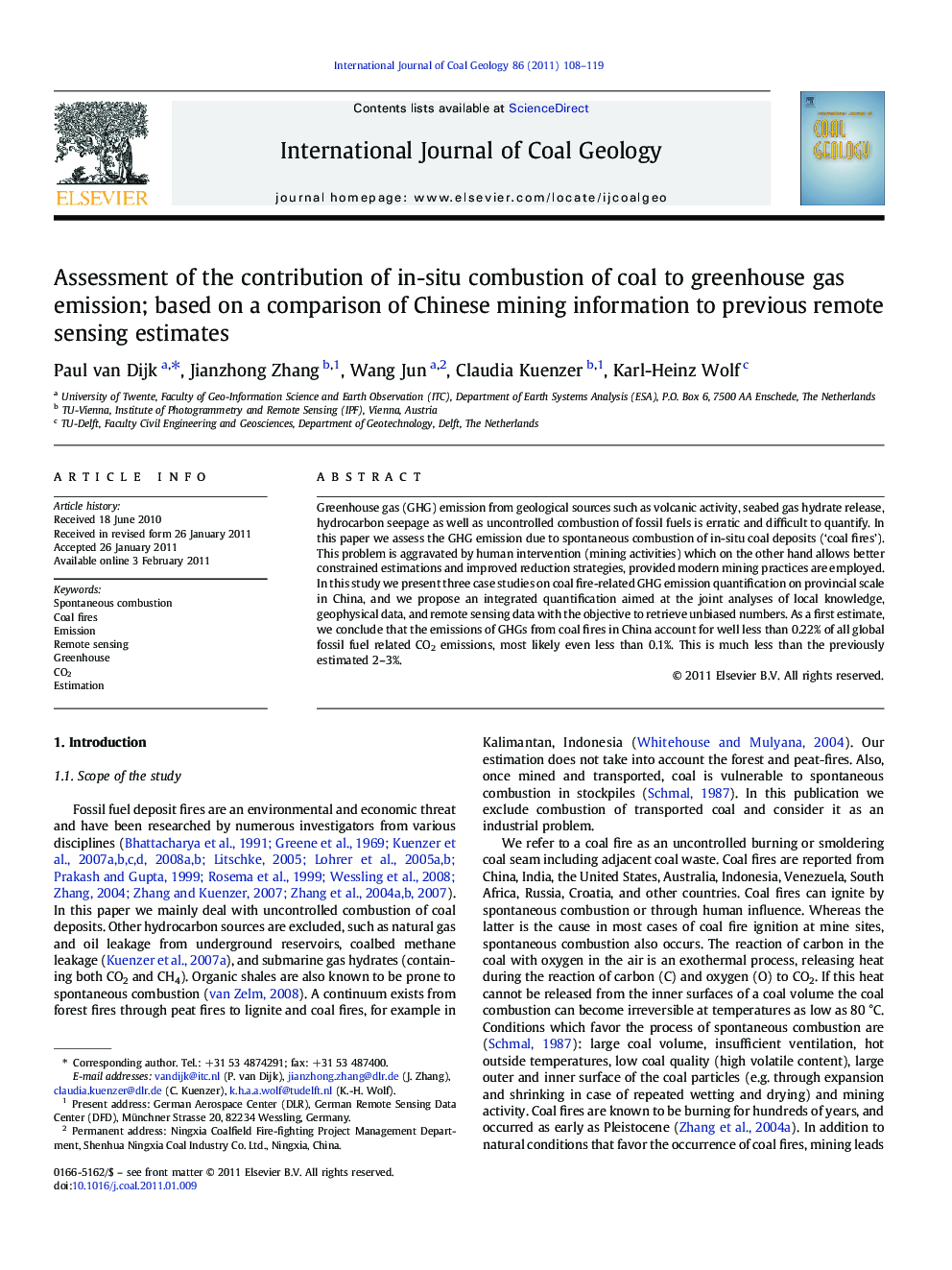| Article ID | Journal | Published Year | Pages | File Type |
|---|---|---|---|---|
| 1753696 | International Journal of Coal Geology | 2011 | 12 Pages |
Greenhouse gas (GHG) emission from geological sources such as volcanic activity, seabed gas hydrate release, hydrocarbon seepage as well as uncontrolled combustion of fossil fuels is erratic and difficult to quantify. In this paper we assess the GHG emission due to spontaneous combustion of in-situ coal deposits (‘coal fires’). This problem is aggravated by human intervention (mining activities) which on the other hand allows better constrained estimations and improved reduction strategies, provided modern mining practices are employed.In this study we present three case studies on coal fire-related GHG emission quantification on provincial scale in China, and we propose an integrated quantification aimed at the joint analyses of local knowledge, geophysical data, and remote sensing data with the objective to retrieve unbiased numbers. As a first estimate, we conclude that the emissions of GHGs from coal fires in China account for well less than 0.22% of all global fossil fuel related CO2 emissions, most likely even less than 0.1%. This is much less than the previously estimated 2–3%.
Research highlights► We study greenhouse gas emissions from spontaneous combustion of coal deposits. ► The study is based on mining information from three provinces in China. ► The results are compared with information extracted from remote sensing data. ► The amount of CO2 emitted is much less than previously estimated.
